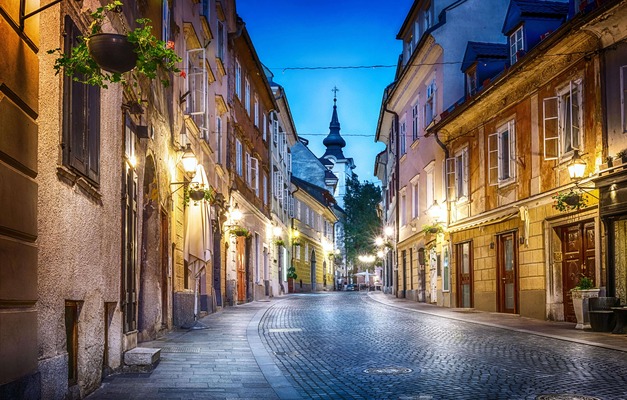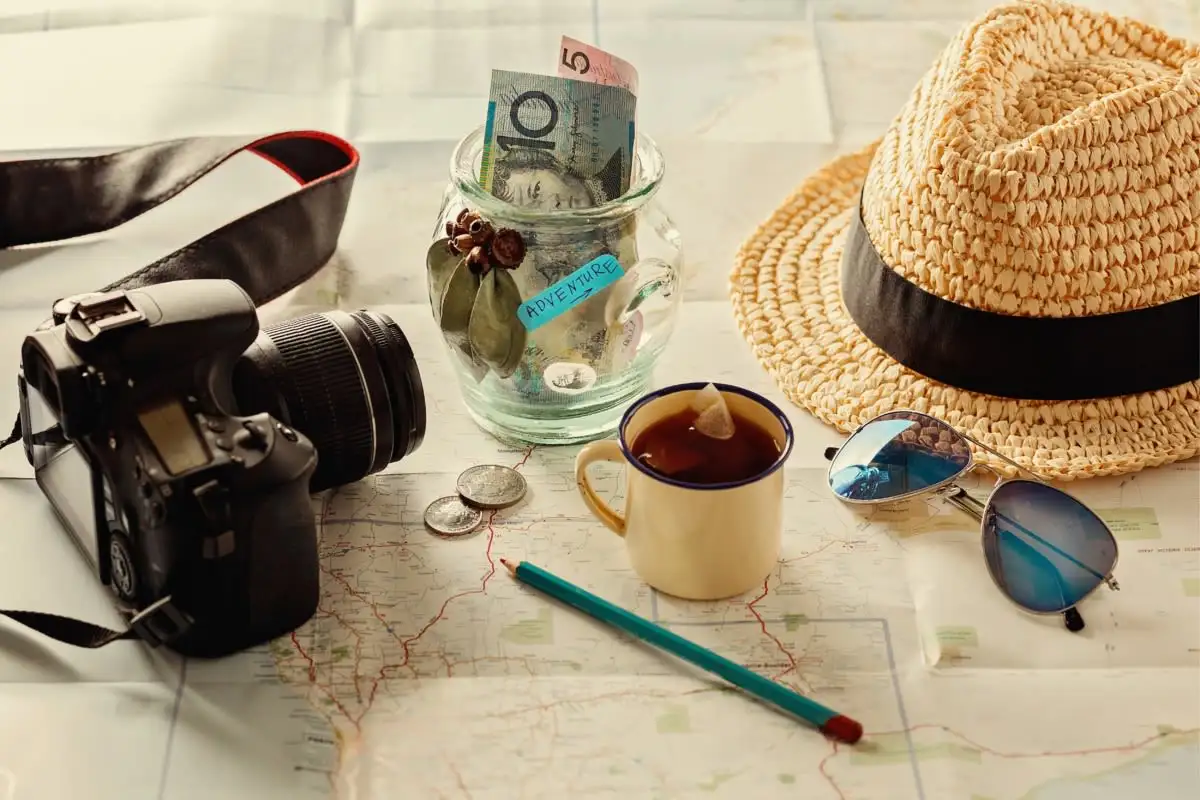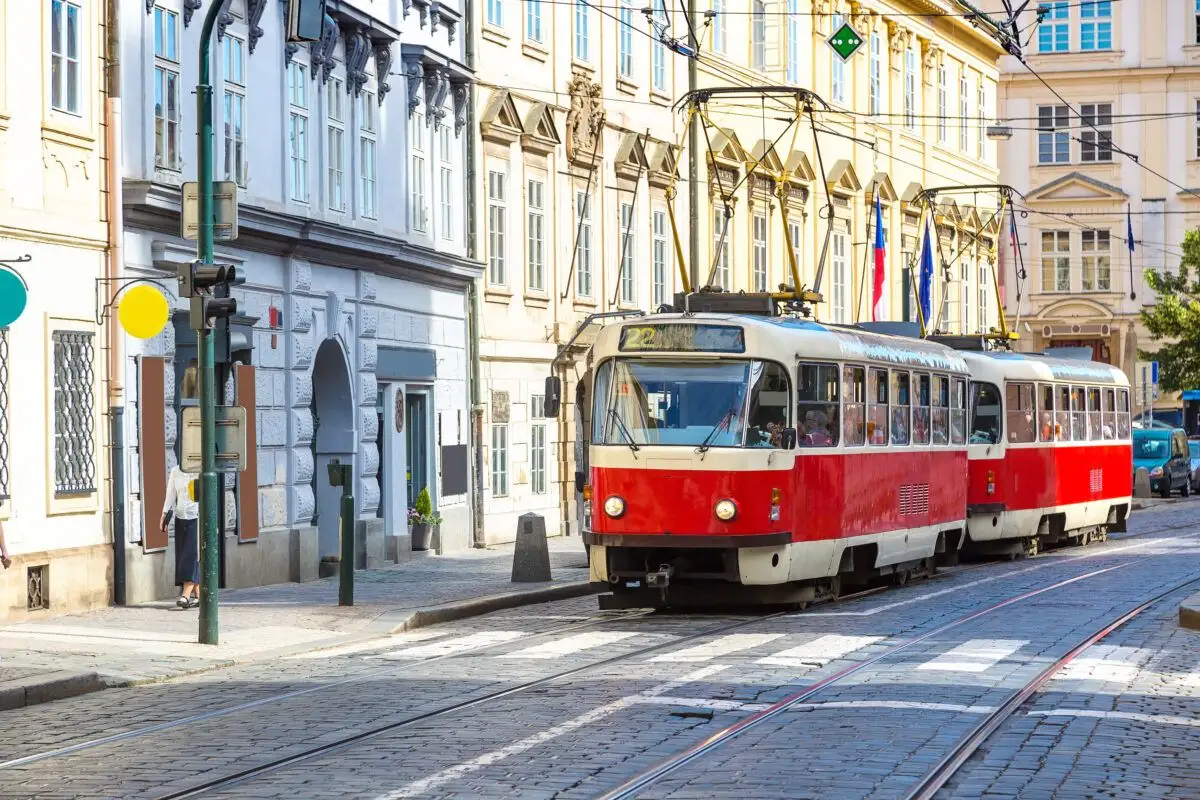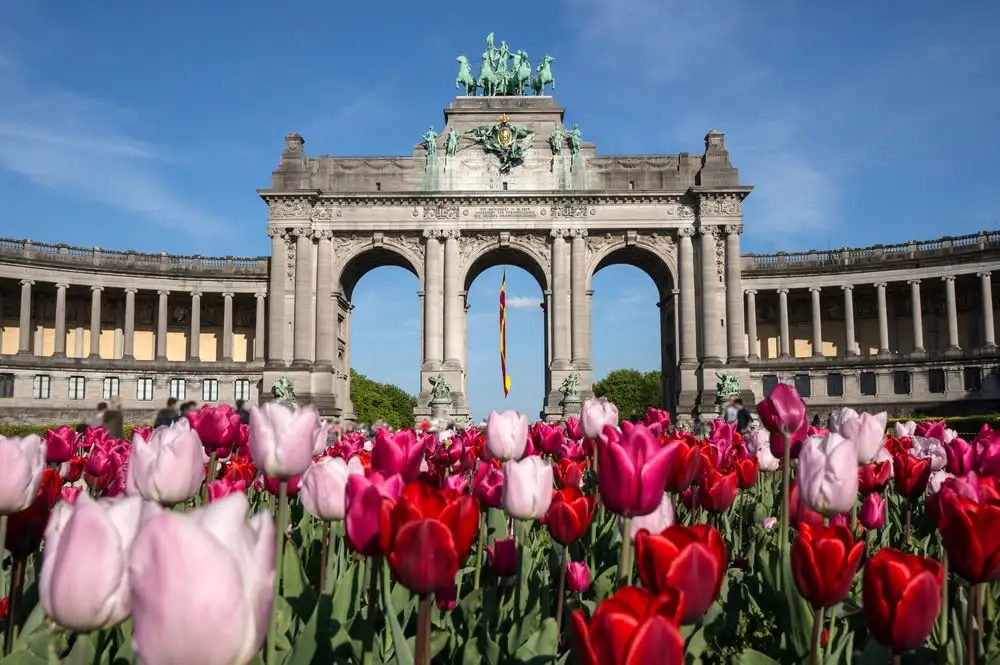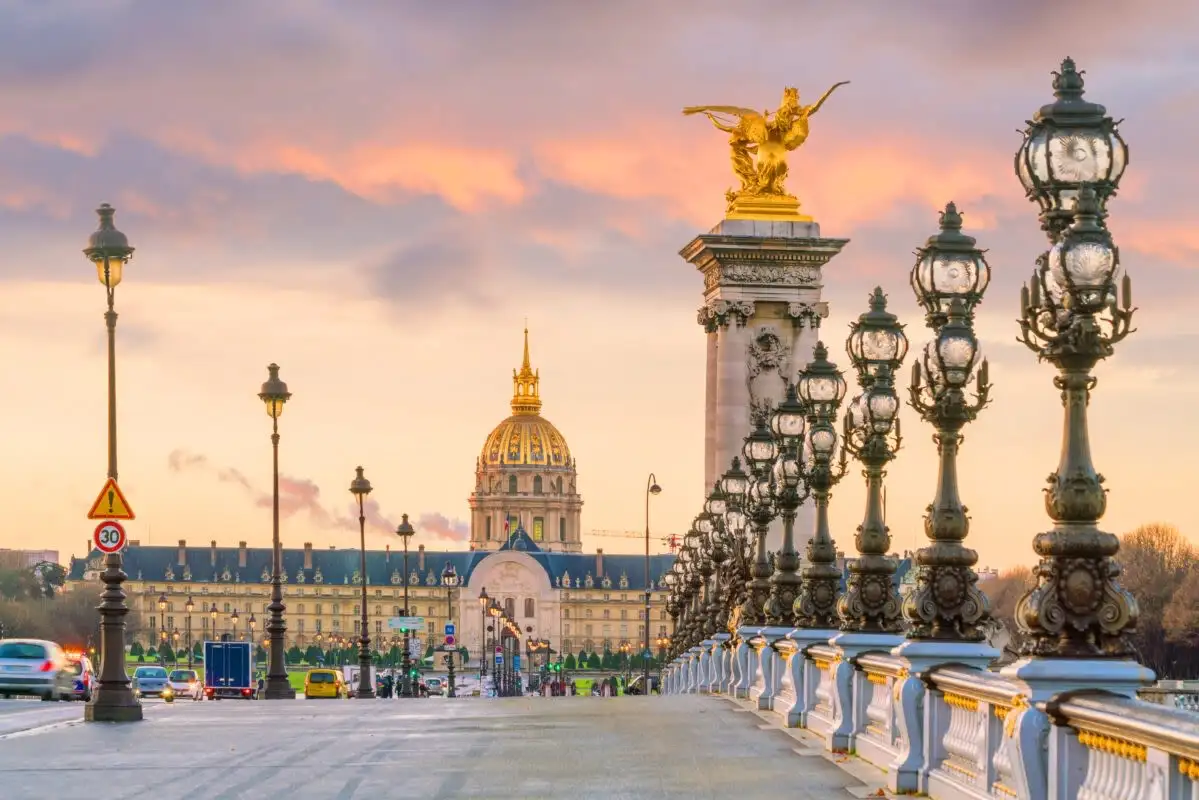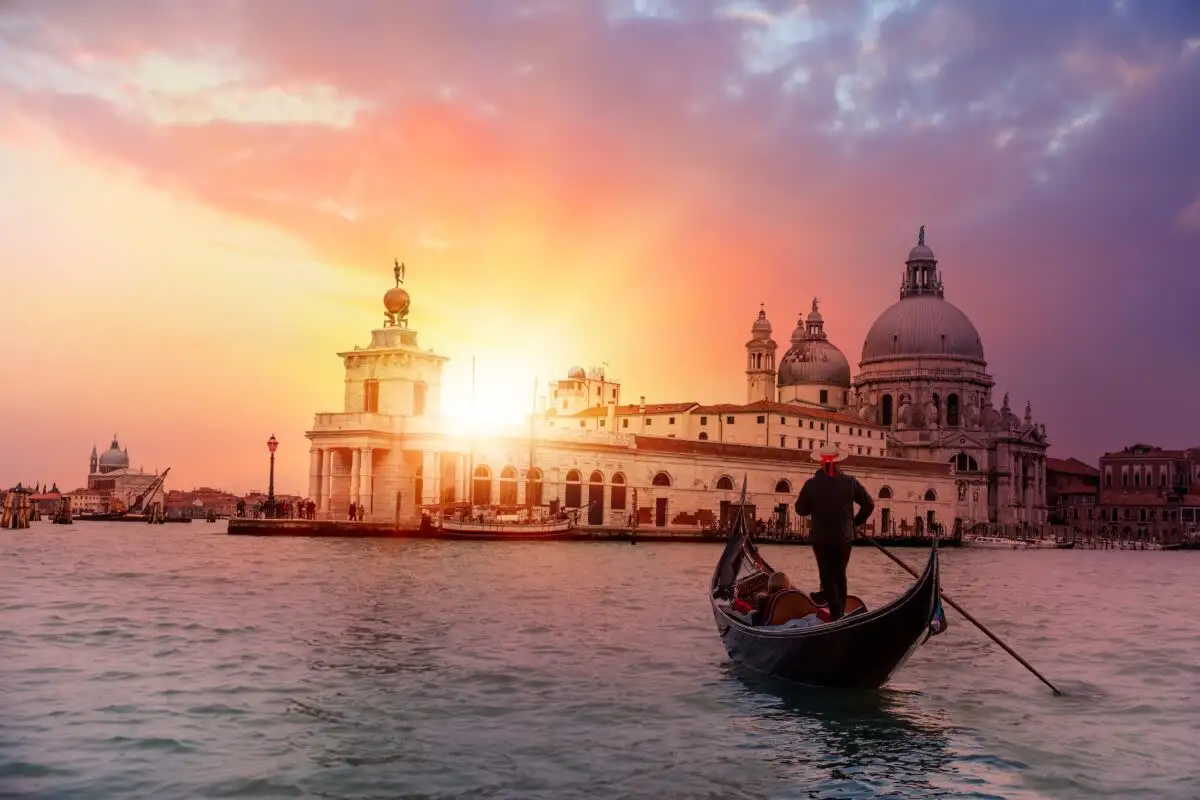
Paris and Brussels: Hidden Gems and Culinary Delights
 7 Day Tour of Paris and Brussels
7 Day Tour of Paris and Brussels
Overview
Trip Map
Itinerary
Inclusions
Reviews
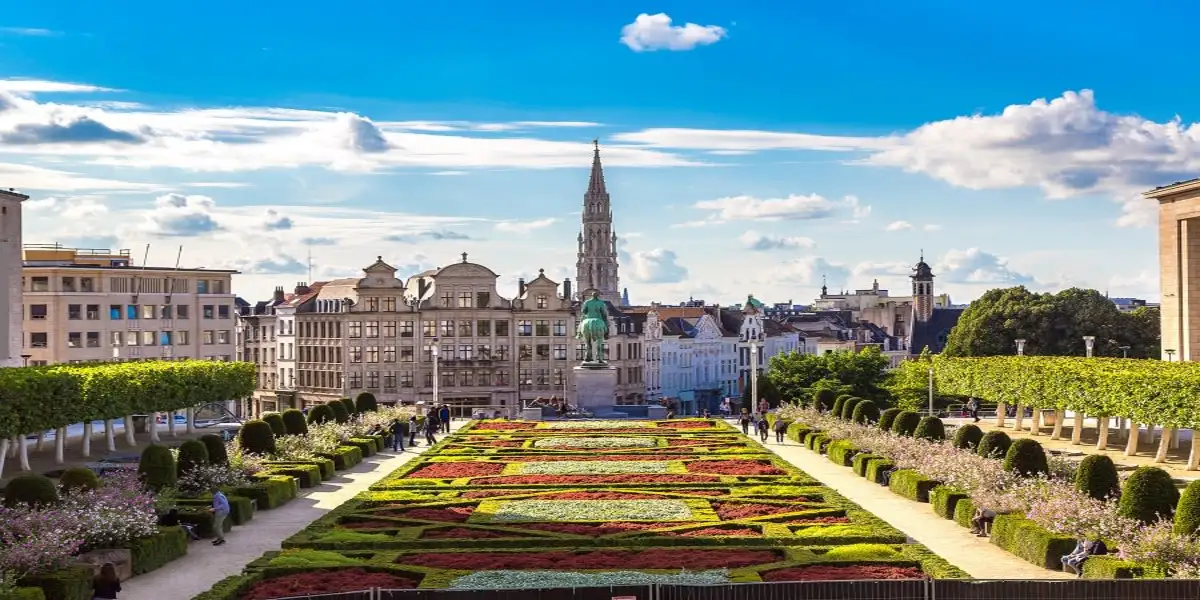






7 Days 6 Nights
Best Time: Jan-Dec
Local Cuisine & Wine
Beer Drinkers
Experience the allure of two of Europe's most enchanting cities on this immersive 7-day journey through Paris and Brussels. Start your adventure in Paris, where you'll wander through historic neighborhoods, marvel at the grandeur of Versailles, and savor gourmet delights in Montmartre. Then, hop on a scenic train ride to Brussels, a laid-back multicultural city. Here, explore medieval architecture, enjoy private guided tours, and indulge in Belgian chocolates and beer. With our detailed itinerary and mobile app, you'll have all the guidance you need for an unforgettable experience.
- Ascend the Eiffel Tower and take in panoramic views of Paris.
- Explore the historic Île de la Cité, home to Notre-Dame and Sainte-Chapelle.
- Savor the culinary delights of Paris's Montmartre neighborhood on a guided food tour.
- Discover Brussels’ iconic Manneken Pis and Grand-Place on a private tour.
- Indulge in a private chocolate and beer tour, sampling some of Belgium's finest creations.
Experience the allure of two of Europe's most enchanting cities on this immersive 7-day journey through Paris and Brussels. Start your adventure in Paris, where you'll wander through historic neighborhoods, marvel at the grandeur of Versailles, and savor gourmet delights in Montmartre. Then, hop on a scenic train ride to Brussels, a laid-back multicultural city. Here, explore medieval architecture, enjoy private guided tours, and indulge in Belgian chocolates and beer. With our detailed itinerary and mobile app, you'll have all the guidance you need for an unforgettable experience.
- Ascend the Eiffel Tower and take in panoramic views of Paris.
- Explore the historic Île de la Cité, home to Notre-Dame and Sainte-Chapelle.
- Savor the culinary delights of Paris's Montmartre neighborhood on a guided food tour.
- Discover Brussels’ iconic Manneken Pis and Grand-Place on a private tour.
- Indulge in a private chocolate and beer tour, sampling some of Belgium's finest creations.

Eiffel Tower
Historic Landmarks

Louvre Museum
Museums & Galleries

Arc de Triomphe
Architecture

Les Invalides
Museums & Galleries

Montmartre
Cultural

Grand Place
Historic Landmarks

Atomium
European History

Royal Museum of Fine Arts
Museums & Galleries

Manneken Pis
Historic Landmarks
Must see sights

Eiffel Tower
Historic Landmarks

Louvre Museum
Museums & Galleries

Arc de Triomphe
Architecture

Les Invalides
Museums & Galleries

Montmartre
Cultural

Grand Place
Historic Landmarks

Atomium
European History

Royal Museum of Fine Arts
Museums & Galleries

Manneken Pis
Historic Landmarks
Starting from
$2079
per person
 Not included
Not included Secure Your Customizable Trip
Enter your details to embark on a journey that can be tailored just for you.
Start
Travelers
0 travelers
Add Room
Remove Room
Preferred Hotel Stars
Select Hotel Stars
Craft Your Own Itinerary
Select your interests and destinations for a trip plan inspired by you.
Gems of Paris & Brussels Trip - Map & Itinerary
Enable/Disable Map Scrolling
Click To Make Map Interactive

Gems of Paris & Brussels Trip Timeline
 Edit Details
Edit DetailsArrival
3 nights
Paris
France
Train: 2.5h
3 nights
Brussels
Belgium
Departure
Day-By-Day Itinerary of Gems of Paris & Brussels Trip
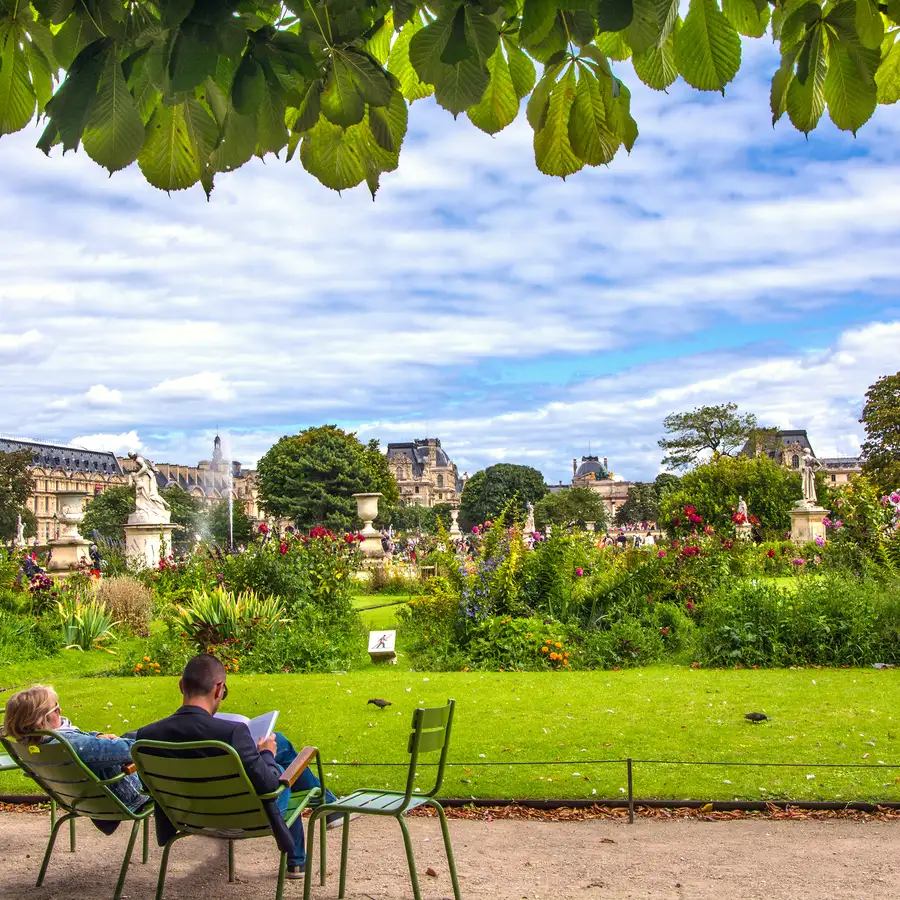
Day 1
Arrive Paris
Day 1
Arrive Paris



To Be Determined
Airport Taxi Pick-Up
Upon arrival at one of Paris's Charles de Gaulle or Orly Airports, it's fairly easy to catch a taxi from outside the main terminal building to your hotel. This is cheaper than a pre-arranged private transfer, although that option is also available if you wish - just ask your consultant. Parisien taxi drivers are generally reliable and honest, but we will provide you with instructions on how to avoid possible scammers and charlatans. If you want to save money, and often quite a lot of time as well, we will also give you alternative instructions on taking public transport into the city center. Details are contained in the full itinerary and mobile app available to our travelers. If on the other hand, you are arriving at Paris's third airport, Beauvais Airport (BVA), then you should always take the shuttle bus. The taxi fare might cost more than the flight - it's nearly 50 miles (75km) outside the city.

Day 1
Arrive Paris


Day 1
Arrive Paris




To Be Determined:
Airport Taxi Pick-Up
Mid-Day/Afternoon:
Tuileries Gardens & Nearby Museums
Late Afternoon/Early Evening:
Hôtel des Invalides


Day 2
Paris
Day 2
Paris



9:00 AM - 1:00 PM
Paris Highlights Walking Tour
Embark on a captivating 4-hour walking tour of the center of Paris, the City of Lights, where history and modernity blend seamlessly along its enchanting streets. Starting from your accommodation, you will explore the heart of this dynamic city and learn how to navigate Paris as a local.

Day 2
Paris


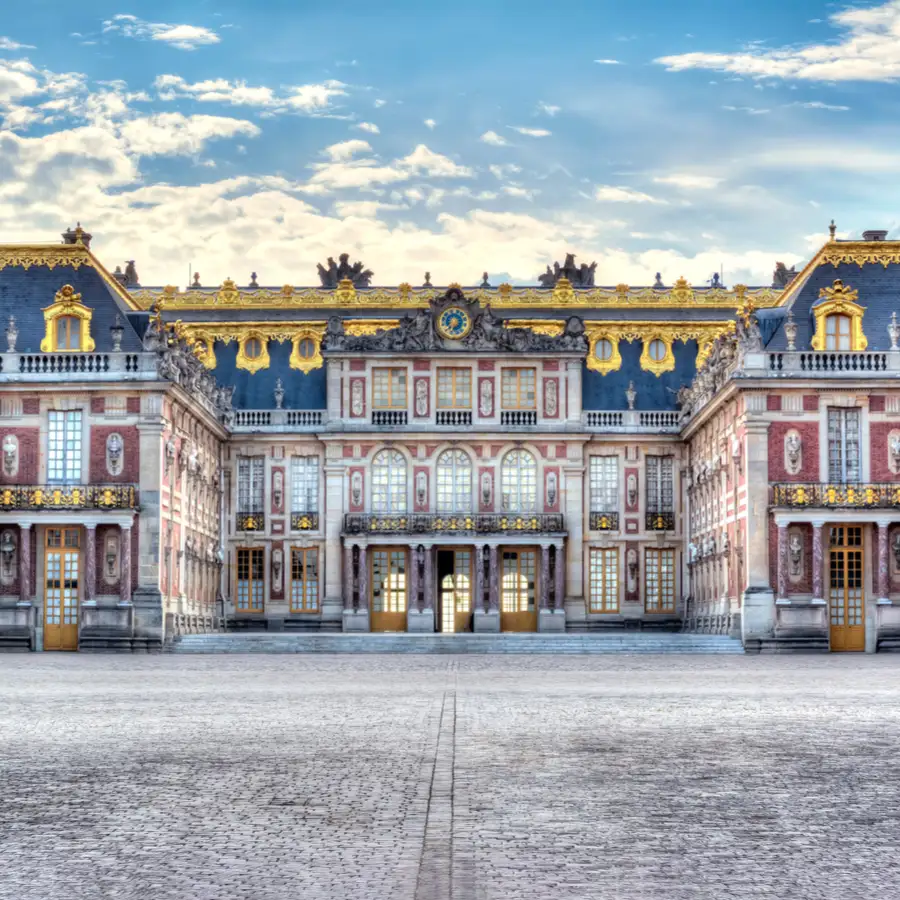
Day 3
Paris
Day 3
Paris



Early Morning to Afternoon
Palace of Versailles
The Château of Versailles, a symbol of the grandeur of French monarchy, invites visitors to explore its lavish history and architectural majesty. From the spellbinding elegance of the Hall of Mirrors, where the Treaty of Versailles was signed, to the vast, meticulously manicured Gardens the pinnacle of French garden design, every corner tells a story of opulence and power. Discover the intimate escapes of royalty at the Grand and Petit Trianon, and marvel at the divine beauty of the Royal Chapel, a masterpiece of Baroque architecture.

The Queen's Hamlet
Imagine living like the "peasants" here?
Show More

Parc de Versailles
Feel like a king, feel like a queen, hopefully you'll feel good looking out across the park
Show More

Main Palace of Versailles
There are palaces, and then there is Versailles...
Show More

The Queen's Hamlet
Imagine living like the "peasants" here?
Show More

Parc de Versailles
Feel like a king, feel like a queen, hopefully you'll feel good looking out across the park
Show More

Main Palace of Versailles
There are palaces, and then there is Versailles...
Show More

The Queen's Hamlet
Imagine living like the "peasants" here?
Show More
prev
next

Day 3
Paris

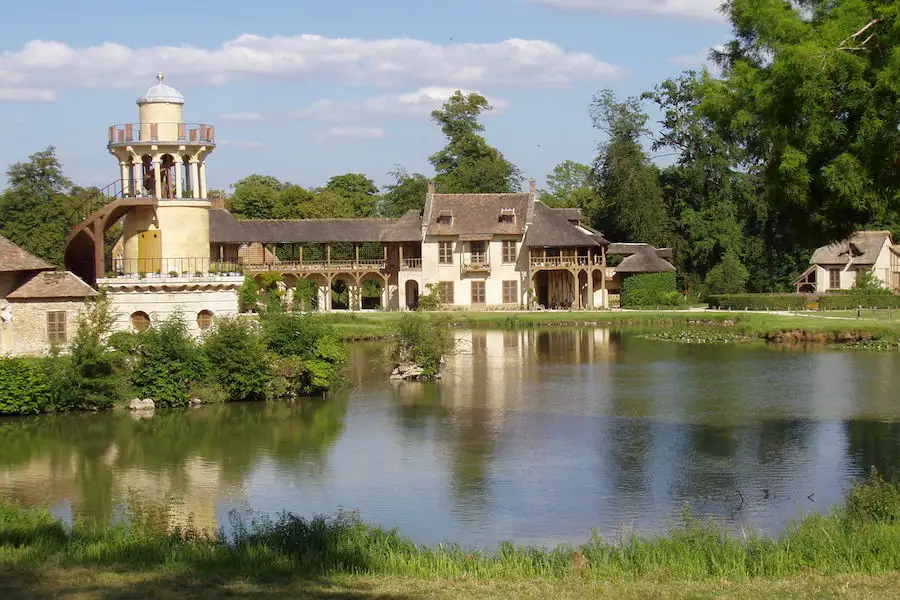
The Queen's Hamlet
 Highlight of Palace of Versailles
Highlight of Palace of VersaillesImagine living like the "peasants" here?
Desiring something different, Queen Marie Antoinette had a hamlet erected where she could supervise servants milking cows, tending pigs, collecting eggs from chickens. She dressed down to play her part, but apparently never got her hands dirty, as far as we know. Her peasant cottage only had two living rooms, a billiard room, a dining hall, and a library. If you are accustomed to palaces, only two living rooms is roughing it. Lest the queen got tired of it all, she could return to the Petit Trianon, a beautiful chateau built on the grounds of the Grand Trianon, which was the retreat chateau built on the grounds of the Palace of Versailles, which was a retreat from the Louvre Palace in Paris.
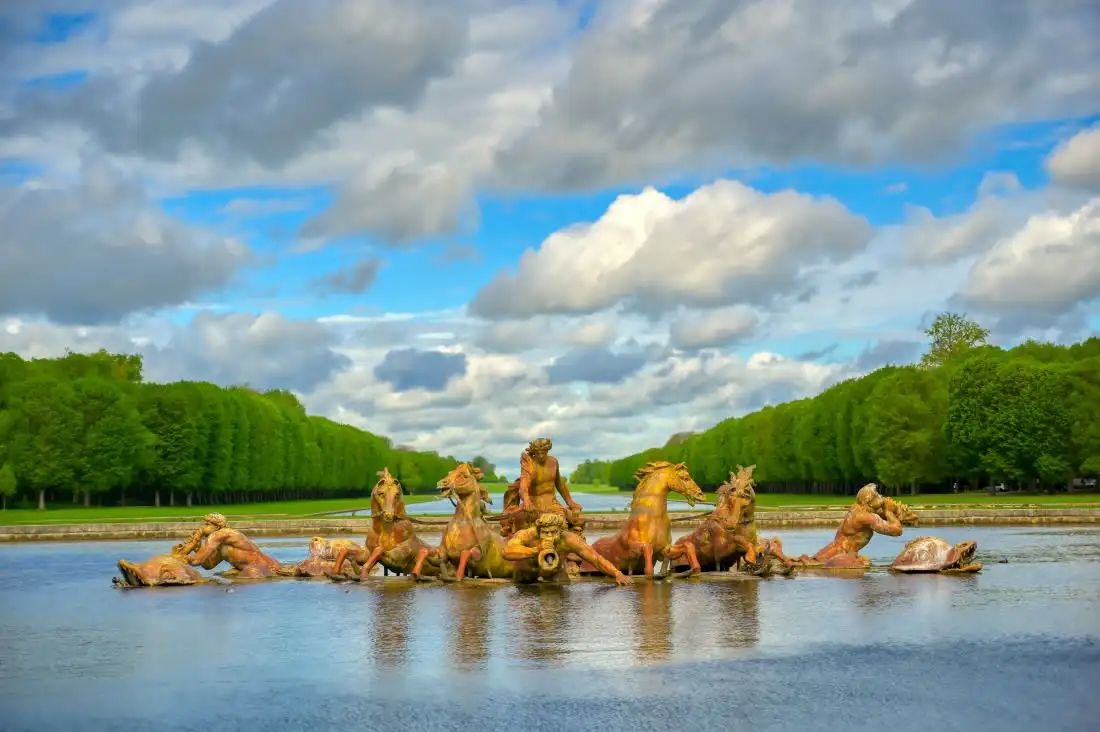
Parc de Versailles
 Highlight of Palace of Versailles
Highlight of Palace of VersaillesFeel like a king, feel like a queen, hopefully you'll feel good looking out across the park
The Parc de Versailles, features some 800 hectares of manicured lawns, stunning fountains, and the Grand Canal, all masterminded by André Le Nôtre. Highlights include the Neptune and Apollo Fountains, the Trianon Palaces, and the Queen's Hamlet. This vast garden symbolizes royal power, but you are welcomed to enjoy yourself on these pleasure grounds.
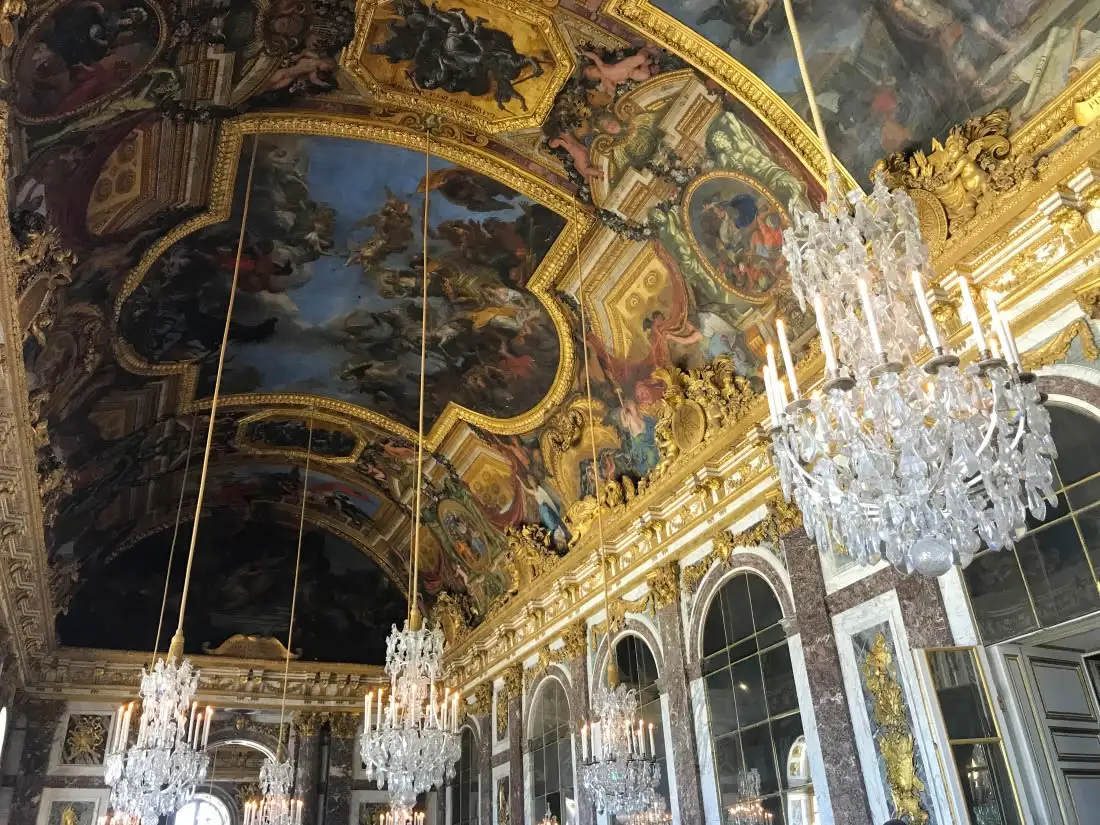
Main Palace of Versailles
 Highlight of Palace of Versailles
Highlight of Palace of VersaillesThere are palaces, and then there is Versailles...
Enlarged by for Emperor Louis XIV as an escape from the dreary political tension of Paris, Versailles might have been the most luxurious palace in the world. Even now, the building stuptifies with its grandeur and elegance, a stunning representation of the French monarchy's opulence. The famous Hall of Mirrors is just one of many, many (2300!) stunning rooms, only a small percentage of which are open for display. It might be too much, or one visit might never be enough.

The Queen's Hamlet
 Highlight of Palace of Versailles
Highlight of Palace of VersaillesImagine living like the "peasants" here?
Desiring something different, Queen Marie Antoinette had a hamlet erected where she could supervise servants milking cows, tending pigs, collecting eggs from chickens. She dressed down to play her part, but apparently never got her hands dirty, as far as we know. Her peasant cottage only had two living rooms, a billiard room, a dining hall, and a library. If you are accustomed to palaces, only two living rooms is roughing it. Lest the queen got tired of it all, she could return to the Petit Trianon, a beautiful chateau built on the grounds of the Grand Trianon, which was the retreat chateau built on the grounds of the Palace of Versailles, which was a retreat from the Louvre Palace in Paris.

Parc de Versailles
 Highlight of Palace of Versailles
Highlight of Palace of VersaillesFeel like a king, feel like a queen, hopefully you'll feel good looking out across the park
The Parc de Versailles, features some 800 hectares of manicured lawns, stunning fountains, and the Grand Canal, all masterminded by André Le Nôtre. Highlights include the Neptune and Apollo Fountains, the Trianon Palaces, and the Queen's Hamlet. This vast garden symbolizes royal power, but you are welcomed to enjoy yourself on these pleasure grounds.

Main Palace of Versailles
 Highlight of Palace of Versailles
Highlight of Palace of VersaillesThere are palaces, and then there is Versailles...
Enlarged by for Emperor Louis XIV as an escape from the dreary political tension of Paris, Versailles might have been the most luxurious palace in the world. Even now, the building stuptifies with its grandeur and elegance, a stunning representation of the French monarchy's opulence. The famous Hall of Mirrors is just one of many, many (2300!) stunning rooms, only a small percentage of which are open for display. It might be too much, or one visit might never be enough.

The Queen's Hamlet
 Highlight of Palace of Versailles
Highlight of Palace of VersaillesImagine living like the "peasants" here?
Desiring something different, Queen Marie Antoinette had a hamlet erected where she could supervise servants milking cows, tending pigs, collecting eggs from chickens. She dressed down to play her part, but apparently never got her hands dirty, as far as we know. Her peasant cottage only had two living rooms, a billiard room, a dining hall, and a library. If you are accustomed to palaces, only two living rooms is roughing it. Lest the queen got tired of it all, she could return to the Petit Trianon, a beautiful chateau built on the grounds of the Grand Trianon, which was the retreat chateau built on the grounds of the Palace of Versailles, which was a retreat from the Louvre Palace in Paris.
prev
next

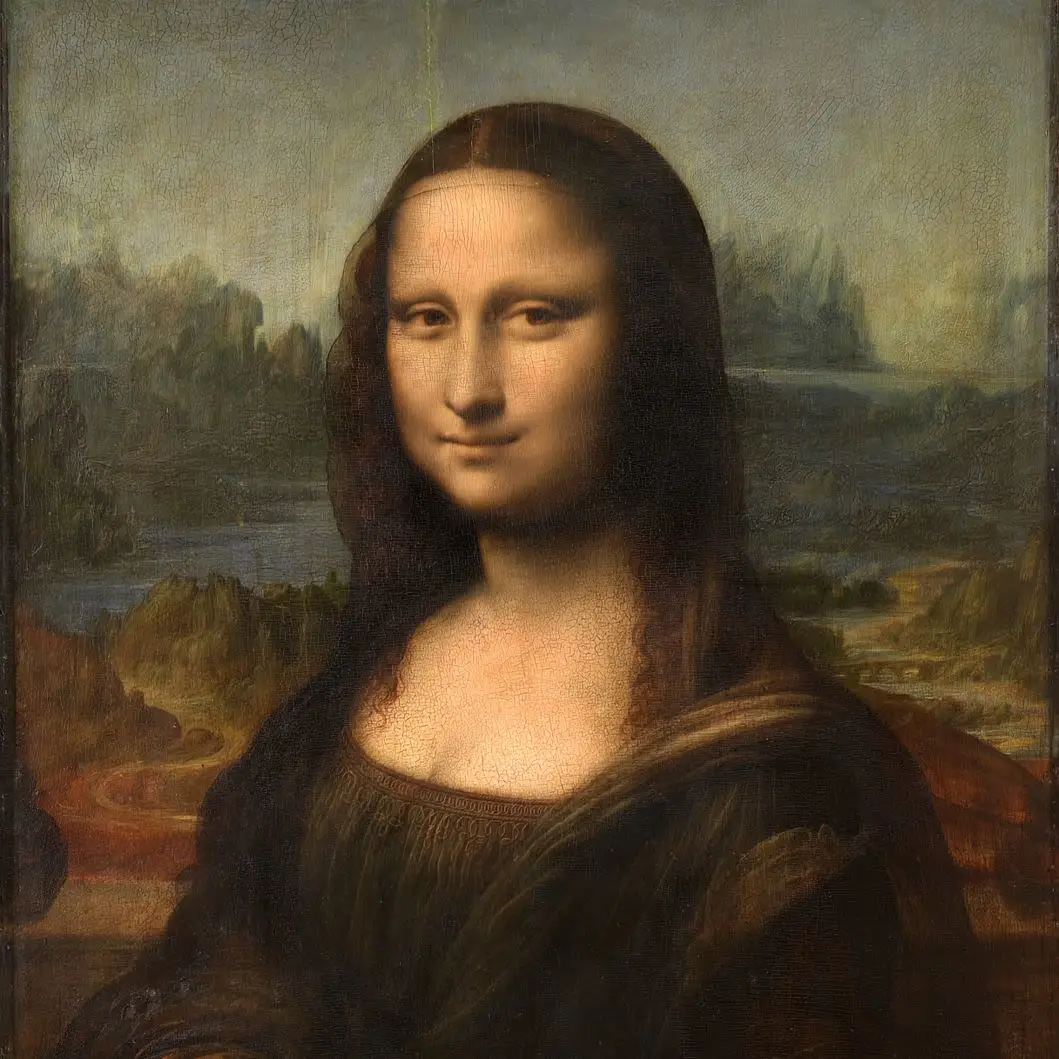
Day 4
Paris to Brussels
Day 4
Paris to Brussels




Early Morning to Mid-Day
Louvre Museum
It might be the greatest art museum in the world; it certainly is the largest with over 380,000 objects; to view every single one for even a minute apiece would take 75 days. And those descriptions still don't do the building and its collection justice. Marvel at treasures inside, including Leonardo Da Vinci's mysterious woman, the Mona Lisa, and everything from an Egyptian masterpiece of mummification to the famed Hellenistic sculpture, Venus de Milo, to patriotic French masterpieces like Delacroix’s Liberty Leading the People. Although the Louvre is vast and ever-crowded, with some strategy and a few helpful tips your visit will take in maximum artworks with minimal hassle.

Day 4
Paris to Brussels



Day 5
Brussels
Day 5
Brussels



9:30 AM - 12:30 PM
Highlights Walking Tour
Discover the history of Brussels and its highlights on this 3-hour tour. Walk through the old town to see the famous Grand-Place, which Victor Hugo called, “the most beautiful square in the world. Nearby you will discover the unofficial symbol of Brussels – Manneken-pis. The tour also includes the halls Saint Géry, the serene royal palace, the Justice Palace, and more. By tour's end you will feel ready to explore Brussels on your own, or prepared for a delicious waffle!

Day 5
Brussels



Day 6
Brussels
Day 6
Brussels



Morning/Mid-Day
Chocolate or Waffle Workshop
Both Chocolate and Waffles have found a unique identity within Belgium. A two-and-a-half hour waffle-making workshop or a 90 minute chocolate-making workshop gives you a hands-on experience for two of Belgium's most iconic foodstuffs. Back home, friends and family will appreciate your new-found talents. Please choose which workshop you'd prefer from the information contained in the Full Itinerary.

Day 6
Brussels



Day 7
Depart Brussels
Day 7
Depart Brussels

To Be Determined
Taxi Dropoff at Airport
Brussels taxis are generally reliable and honest, so taking a taxi is cheaper than a pre-arranged transfer. Your hotel will be happy to arrange a pick up for you. If you are picked up about 3 hours before your departure time, you should arrive at the airport with a little over two hours to spare. If you are leaving during rush hour, you may want to budget an extra fifteen minutes or so.

Day 7
Depart Brussels


What's Included In Gems of Paris & Brussels Trip

Pre-Paid Tours and Activities:
- Private Guided Walking Tour of the Center of Paris
- Small Group Food Tour of Montmartre District
- Private Guided Walking Tour of Brussels
- Private Beer and Chocolate Tour of Brussels

Accommodation:
- 3 nights at a hotel of your choice in Paris
- 3 nights at a hotel of your choice in Brussels

Go Real Travel Mobile App:
- Itinerary Plan & Reservations Info
- Points of Interest
- Detailed Travel Information
- Maps & Directions
Other Trips You May Like

7 Days
From$1899USD

7 Days
From$1999USD

7 Days
From$0USD

10 Days
From$2645USD
Paris, Rome, Florence: An Unforgettable 10-Day Itinerary to Europe's Most Iconic Destinations

Italy, France

14 Days
From$3895USD

9 Days
From$2829USD

17 Days
From$4530.9234235USD

4 Days
From$775USD
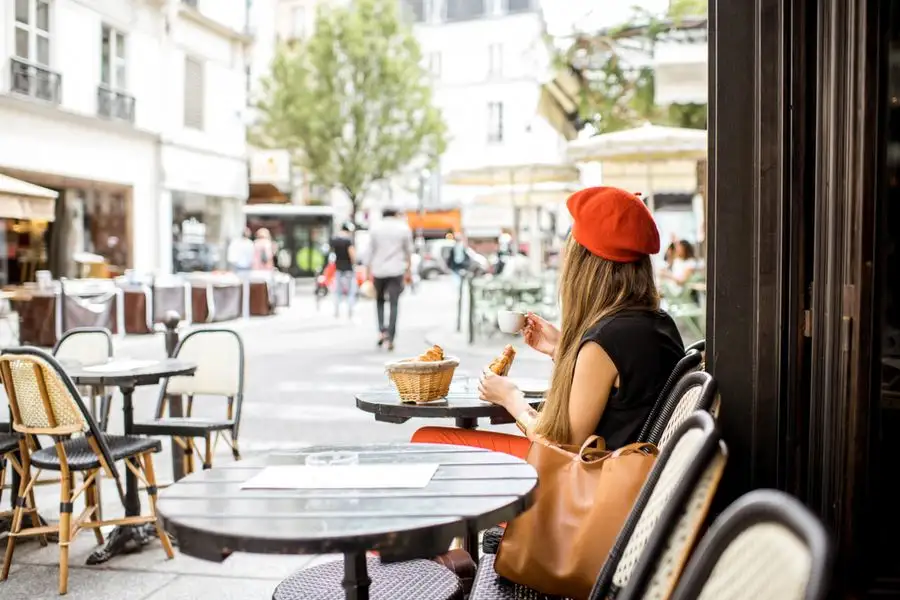
7 Days
From$1492USD

7 Days
From$1899USD

7 Days
From$1999USD

7 Days
From$0USD

10 Days
From$2645USD
Paris, Rome, Florence: An Unforgettable 10-Day Itinerary to Europe's Most Iconic Destinations

Italy, France

14 Days
From$3895USD

9 Days
From$2829USD

17 Days
From$4530.9234235USD

4 Days
From$775USD

7 Days
From$1492USD
prev
next
Featured Blogs
prev
next
Our Customers Say It Best
Marianne Strydom, Paarl, South Africa
I just wanted to thank you for organizing an amazing trip for me – I packed in so much in such a short period of time and everything was just perfect. The way you do things makes it possible to really get to know the destination, which for me as a travel agent could not have been better. 

Otto Chuy, Los Angeles, California
I am still surprised how everything worked as planned, without a hitch. All instructions in your itinerary were precise and correct. Your suggestions and comments in each of the locations we went to were very helpful. All your guides, without exception, were wonderful and exactly on time. 

Malini Dutta, Boston, Massachusetts
We can't thank you enough for the detailed plans, maps, and suggestions. It really felt that someone was holding our hands and showing us around. We had all the excitement of discovering foreign lands, with none of the problems that can happen while negotiating unfamiliar places. In fact, all the cities felt like home within a few hours of arriving and exploring. 

Bev and Mark Frankel, Williamsburg, Virginia
We could not be more pleased with Go Real Travel! You took the guess work out of things like public transport but still managed to allow us the freedom to tour as we wanted. Our guides were exceptional and every time I saw a Viking Cruise tour of 25 people, I realized the quality experience we were getting with Go Real. 

Marianne Strydom, Paarl, South Africa
I just wanted to thank you for organizing an amazing trip for me – I packed in so much in such a short period of time and everything was just perfect. The way you do things makes it possible to really get to know the destination, which for me as a travel agent could not have been better. 

Otto Chuy, Los Angeles, California
I am still surprised how everything worked as planned, without a hitch. All instructions in your itinerary were precise and correct. Your suggestions and comments in each of the locations we went to were very helpful. All your guides, without exception, were wonderful and exactly on time. 

Malini Dutta, Boston, Massachusetts
We can't thank you enough for the detailed plans, maps, and suggestions. It really felt that someone was holding our hands and showing us around. We had all the excitement of discovering foreign lands, with none of the problems that can happen while negotiating unfamiliar places. In fact, all the cities felt like home within a few hours of arriving and exploring. 

Bev and Mark Frankel, Williamsburg, Virginia
We could not be more pleased with Go Real Travel! You took the guess work out of things like public transport but still managed to allow us the freedom to tour as we wanted. Our guides were exceptional and every time I saw a Viking Cruise tour of 25 people, I realized the quality experience we were getting with Go Real. 



Gems of Paris & Brussels Trip FAQ's
Is 7 days really enough to see both Paris and Brussels?
It’s tight but totally doable. You’ll get four nights in Paris and two in Brussels, which gives you time for major highlights in both without feeling rushed. Paris will focus on must-sees like the Eiffel Tower, the Louvre, and a private guided city tour. In Brussels you will get a taste of Belgium’s Grand Place and food scene. The itinerary includes three guided activites, a private walking tour, chocolate or waffle workshop, and a private beer tour. If you wanted more leisure days, the trip is flexible—you could add extra nights in either city.
How do you travel between Paris and Brussels?
You’ll take a high-speed Thalys train, which is included in your package. Your itinerary includes pre-booked tickets and step-by-step instructions in their mobile app, so you don’t have to figure out platforms or reservations. The ride is about 1 hour 45 minutes, super easy compared to flying or renting a car. Go Real Travel’s mobile app guides you step by step through finding your train at Paris Gare du Nord and what to expect on arrival at Brussels Midi.
Are the tours private or group-based?
Almost everything is private. You’ll have a private walking tour of Paris, a private walking tour of Brussels, and a private beer & chocolate tour. The Montmartre food tour is small-group, which adds some fun energy without being crowded. The rest of the time is self-guided with detailed directions in the mobile app.
Is local transportation covered?
The only prepaid transport is your Paris to Brussels train. Metro, RER, and taxis are paid locally. The difference is you’re never guessing: the itinerary provides point-to-point instructions for every move — from the airport to your hotel, hotel to tours, and self-guided touring.
Are tickets to the Louvre or Eiffel Tower included?
No, they’re not prepaid. Both are optional extras. What you do get is Go Real Travel’s detailed guidance: step-by-step instructions on how to book tickets online, how to avoid the longest lines, and the best entrances and times to go. The app walks you through the whole process so you can add these must-sees easily without stress.
What hotels are included?
Three nights in Paris and three in Brussels, prepaid. Hotels are centrally located, so you’ll be within walking distance of restaurants and attractions. You’ll choose your specific hotel from Go Real Travel’s curated options when booking, rather than being assigned one at random.
Do I have free time?
Yes. Guided activities don’t fill the entire day, and the itinerary supports independent exploration with directions to additional sights, restaurants, and neighborhoods.
How do I get from the airport into Paris?
Transfers aren’t prepaid, but you have three easy options. The first is a taxi — official Paris taxis have regulated flat fares from both Charles de Gaulle and Orly airports into the city, and the itinerary explains exactly where to find the taxi stands and what fare to expect so you won’t be overcharged. The second option is Uber, which is allowed at both airports, though you’ll need to walk to the designated rideshare pickup areas. Depending on traffic, Uber can be cheaper or more expensive than the flat-rate taxis. The third option is the RER B train, Paris’ express commuter rail line that runs directly from both airports into central Paris. The itinerary shows you how to find the station inside the terminal, buy your ticket, and get off at the stop closest to your hotel.
What’s the best time to go to Paris and Brussels?
May, June, September, and October are ideal. July–August are warmer but still workable. December offers Paris lights and Brussels Christmas markets. Other months of the year may not have the best weather, but the crowds are much lighter and it is easier to visit the top attractions.
Can I extend the trip?
Yes. You can add extra nights in Paris or Brussels or continue by train to Amsterdam or other cities. Which European cities you visit is up to you.
Why book this trip instead of planning it myself?
Because you avoid the stress. Everything is booked for you. Hotels are central, guides are private, the train is prepaid, and our mobile app gives detailed directions for everything. You still have freedom, but without logistical headaches.
Is this Paris and Brussels itinerary good for kids?
Yes, though museums may be intense for young ones. Montmartre’s food tour and Brussels’ chocolate tour are kid-friendly, and because many tours are private, pacing can be adjusted.
Is it safe in Paris and Brussels?
Both Paris and Brussels are big cities, so you should always maintain situational awareness, but in general, these cities are safe, especially in the tourist center. The main issue is pickpockets in crowded tourist zones like the Louvre or Grand Place. The mobile app even notes areas where you should be extra alert.
Are meals included?
Breakfast at the hotels may be included depending on which hotels you choose. Lunch and dinner are on your own, which is ideal for trying French cafés and Belgian brasseries.
What if something goes wrong?
The itinerary covers most of what you will need for your trip, but Go Real Travel also provides 24/7 support from their Europe-based team if you run into issues like delays or other unexpected problems.
Explore cities in more detail
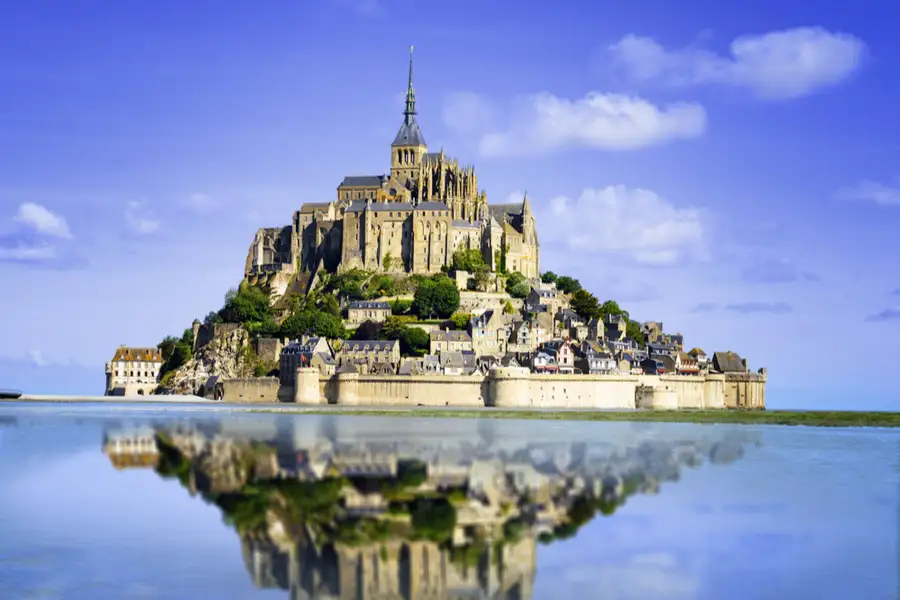
Rennes
Rennes is the capital of Brittany, the most northwest region in France. A sea and countryside getaway, Brittany is famous for its medieval towns, ancient rocky landscapes, and seaside villages. Dotted along the blue-green Atlantic coastline, towns like St. Malo, Dinard, and Cancale are long-time summer vacation spots for the French. Needless to say, you have to try the fresh seafood. Offshore, the island of Mont-Saint-Michel rests dreamily amongst the waves. One of the most beloved UNESCO heritage sites in France, this medieval abbey is connected to the mainland by a bridge over a causeway. Heading inland, there are centuries-old churches, stone cottages, and castles that belonged to Brittany’s medieval royalty, who were known for constantly feuding over successions. The river town of Dinan is surrounded by a fortress wall, a must-see for both its history and profound beauty. In Rennes, half-timbered houses and cobbled streets give way to some of the oldest marketplaces in France. Rennes itself is a tranquil, medium-sized city, easily explored in half a day. In the evening, the city’s gastronomic scene invites you to try local specialties - pancakes, such as savory stuffed galettes and thin, lemony crêpes, are the order of the day here.

Learn About Rennes
Build Rennes Trip
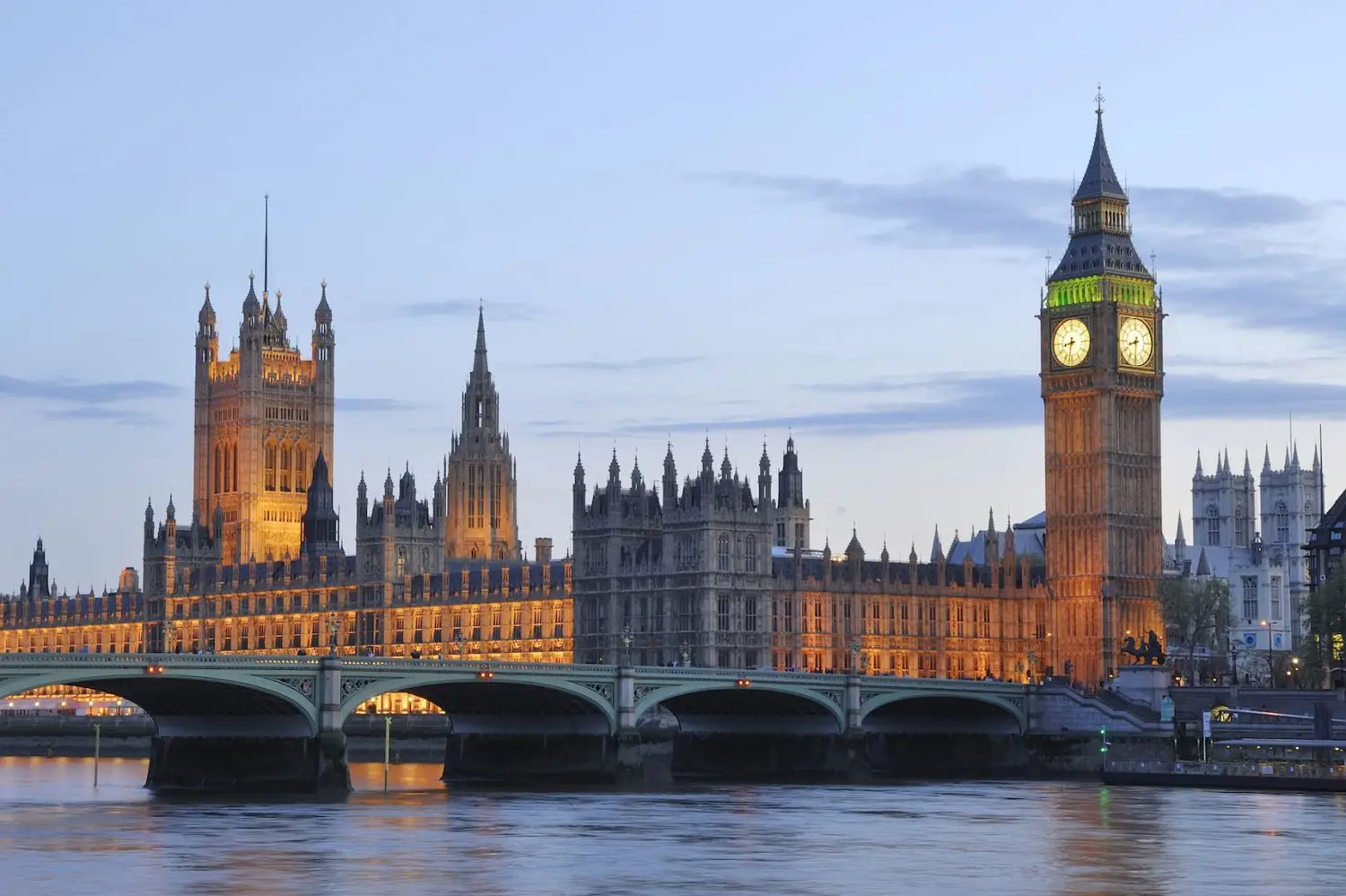
London
London is a city where centuries of royal history, cultural heritage, and cosmopolitan life come together to create a thrilling travel experience. At its core stand iconic landmarks like Big Ben, Westminster Abbey, and the Tower of London, each telling tales of monarchs, revolutions, and traditions that have shaped the nation. Stroll along the River Thames, past the grandeur of Parliament and the London Eye, and dive into the buzz of neighborhoods like Covent Garden, Soho, and Chinatown—each brimming with character, cuisine, and charm. From the stately Mall leading to Buckingham Palace to the vibrant energy of Piccadilly Circus, London is a city of contrasts where old and new exist in vivid harmony. Culinary adventures await across its boroughs, from refined afternoon teas to global street food and traditional pub fare. Whether you’re catching a play in the West End, exploring world-class museums, or unwinding in one of its royal parks, London invites you to discover something extraordinary at every turn.

Learn About London
Build London Trip

Strasbourg
Strasbourg, the enchanting capital of Alsace, blends French elegance with German charm in a way that feels utterly unique. This riverside city invites you to stroll through cobblestone streets where half-timbered houses and flower-decked canals paint a storybook scene. At its heart rises the majestic Strasbourg Cathedral, a Gothic masterpiece whose spire once made it the tallest building in the world. Nearby, the fairytale district of Petite France beckons with its winding lanes and medieval ambiance. Beyond its old-world beauty, Strasbourg proudly serves as the seat of European unity, home to institutions like the European Parliament. In winter, its world-famous Christmas markets transform the city into a glittering wonderland of lights, aromas, and festive cheer. Whether you’re admiring centuries-old architecture or savoring Alsatian cuisine beside the river, Strasbourg offers an experience that’s both timeless and alive with spirit.

Learn About Strasbourg
Build Strasbourg Trip
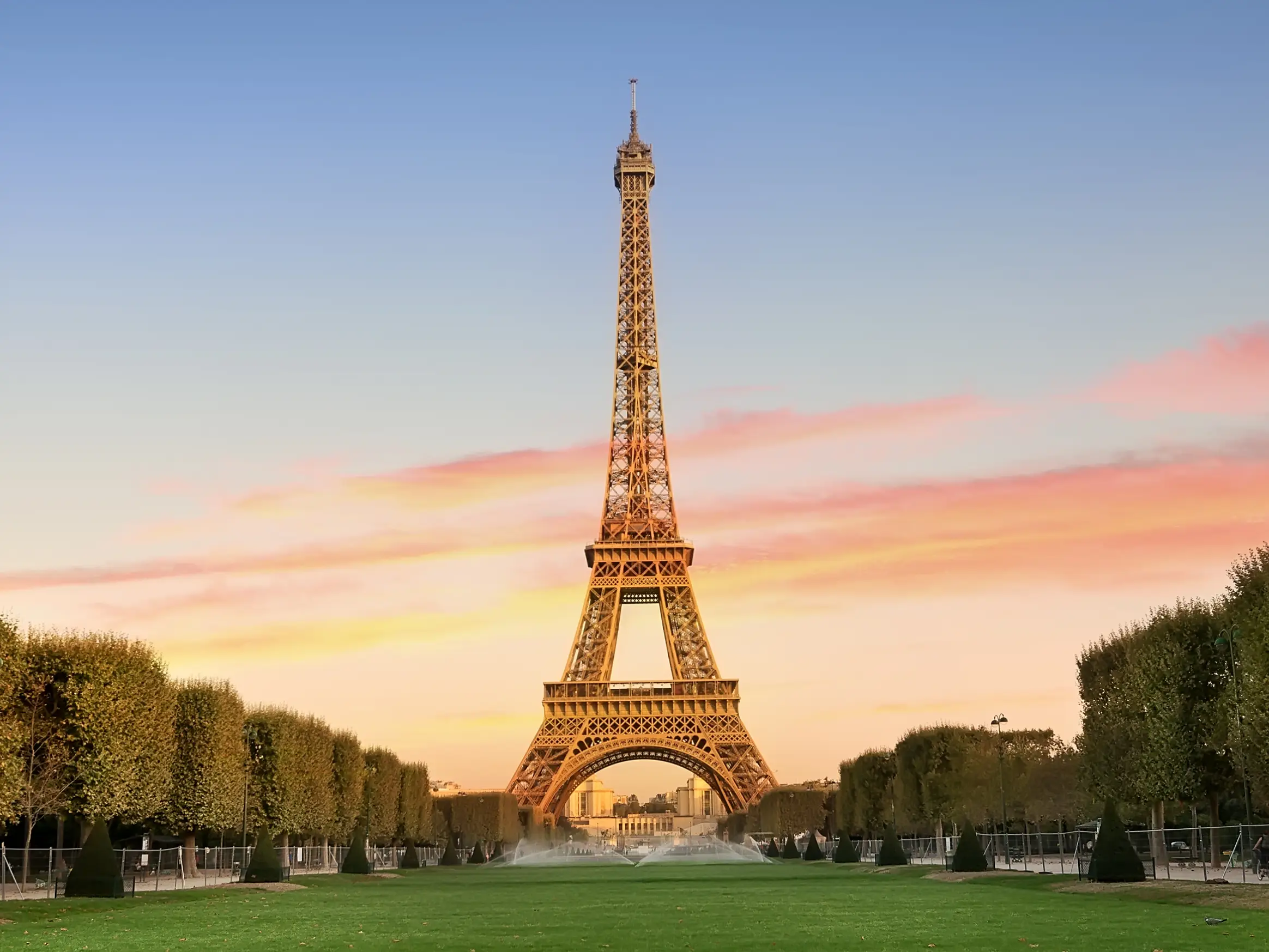
Paris
The magic of Paris is undeniable. This is the most romantic destination in Europe, and surely the number one bucket list destination of all time. If you want to say you've traveled, you have to visit Paris at least once. Along with classic must-sees like the Eiffel Tower and the Sacre-Coeur, there is so much to see and do in Paris that it helps to narrow it down by interest. Fashion and shopping enthusiast? Look no further than the Galeries Lafayette, Avenue des Champs-Élysées, or the Marais. Art aficionado? Once you're done with the Louvre, make a start on the Musée d'Orsay. History buffs won't be able to walk a block without uncovering a monument to Napoleon or Louis XIV. If you visit Paris with a foodie, be warned — you'll gaze in a lot of patisserie windows, and sample your weight in croissants. Because Paris always has so much on offer, it never grows old. At dusk, as you stroll the wide boulevards past Haussmann apartment buildings and sharply dressed Parisians, or gaze down at the city from the hill at Montmarte, you might find yourself saying 'Paris Je t' aime'. This is, after all, the City of Love.

Learn About Paris
Build Paris Trip
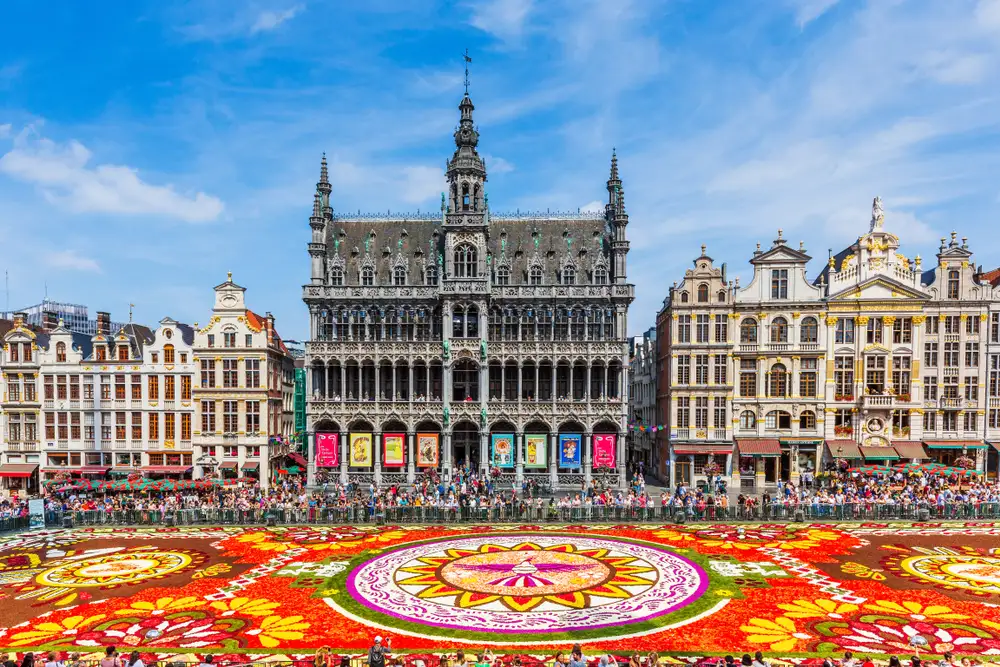
Brussels
It feels as though everything in Brussels is tinted with gold. From the gilded rooftops of the old houses on the Grand Palace to the foil-wrapped bonbons piled in chocolatier windows, Brussels seems to sparkle and wink at you around every corner. Aside from the lustrous architecture and Trappist ales, this shiny city is probably still best known for its iconic street food options: salty, golden fries, and fluffy, honey-colored waffles. While a major political center, home of the EU and NATO, don’t be fooled by Brussels stern ‘Eurocratic’ facade. Brussels revels in cheeky humor and mischief. So much so, Brussel’s beloved mascot, the ‘Manneken Pis’, is a statue of a small child urinating into a fountain. The city takes great pleasure in dressing this statue in festive-themed costumes. It’s no surprise that the artist Magritte, one of the great visual tricksters of the 20th century, called Brussels home. After a few days exploring the city, and taking in its sights and scenes, you’re sure to come away smiling.

Learn About Brussels
Build Brussels Trip

Bayeux
Bayeux is an old, well-preserved town in Normandy. Most known as the backdrop for the Battle of Normandy, visitors who descend from WWII veterans often feel a special, somber connection to this part of France. On June 6, 1944, otherwise known as ‘D-Day’, thousands of Allied troops landed on Normandy’s Atlantic Coast, with a mission to drive out the German occupying forces. More than 120,000 Allied soldiers died in combat over the next three months. Although victorious, the campaign for Normandy caused the highest number of losses for America in all of WWII. A landscape of remembrance, on a tour of the Norman countryside you’ll see the remains of tanks, aircraft, and military bunkers. Special cemeteries and memorials in the area pay tribute to the sacrifice of fallen soldiers. Despite the destruction of nearly every neighboring village, the town of Bayeux endured WWII unscathed. Along with all its medieval architecture, the town’s most precious treasure, the Bayeux Tapestry, was miraculously spared. Stitched in the 11th century, the Tapestry tells the story of William the Conqueror’s invasion of England in 1066. As you view the tapestry and stroll through the charming streets of Bayeux, the sweeping cathedral spires and gently flowing River Aure cast you back to another time. A landscape of war, but also remembrance, a trip to Bayeux and Normandy will deepen your appreciation and respect for the past.

Learn About Bayeux
Build Bayeux Trip

Rennes
Rennes is the capital of Brittany, the most northwest region in France. A sea and countryside getaway, Brittany is famous for its medieval towns, ancient rocky landscapes, and seaside villages. Dotted along the blue-green Atlantic coastline, towns like St. Malo, Dinard, and Cancale are long-time summer vacation spots for the French. Needless to say, you have to try the fresh seafood. Offshore, the island of Mont-Saint-Michel rests dreamily amongst the waves. One of the most beloved UNESCO heritage sites in France, this medieval abbey is connected to the mainland by a bridge over a causeway. Heading inland, there are centuries-old churches, stone cottages, and castles that belonged to Brittany’s medieval royalty, who were known for constantly feuding over successions. The river town of Dinan is surrounded by a fortress wall, a must-see for both its history and profound beauty. In Rennes, half-timbered houses and cobbled streets give way to some of the oldest marketplaces in France. Rennes itself is a tranquil, medium-sized city, easily explored in half a day. In the evening, the city’s gastronomic scene invites you to try local specialties - pancakes, such as savory stuffed galettes and thin, lemony crêpes, are the order of the day here.

Learn About Rennes
Build Rennes Trip

London
London is a city where centuries of royal history, cultural heritage, and cosmopolitan life come together to create a thrilling travel experience. At its core stand iconic landmarks like Big Ben, Westminster Abbey, and the Tower of London, each telling tales of monarchs, revolutions, and traditions that have shaped the nation. Stroll along the River Thames, past the grandeur of Parliament and the London Eye, and dive into the buzz of neighborhoods like Covent Garden, Soho, and Chinatown—each brimming with character, cuisine, and charm. From the stately Mall leading to Buckingham Palace to the vibrant energy of Piccadilly Circus, London is a city of contrasts where old and new exist in vivid harmony. Culinary adventures await across its boroughs, from refined afternoon teas to global street food and traditional pub fare. Whether you’re catching a play in the West End, exploring world-class museums, or unwinding in one of its royal parks, London invites you to discover something extraordinary at every turn.

Learn About London
Build London Trip

Strasbourg
Strasbourg, the enchanting capital of Alsace, blends French elegance with German charm in a way that feels utterly unique. This riverside city invites you to stroll through cobblestone streets where half-timbered houses and flower-decked canals paint a storybook scene. At its heart rises the majestic Strasbourg Cathedral, a Gothic masterpiece whose spire once made it the tallest building in the world. Nearby, the fairytale district of Petite France beckons with its winding lanes and medieval ambiance. Beyond its old-world beauty, Strasbourg proudly serves as the seat of European unity, home to institutions like the European Parliament. In winter, its world-famous Christmas markets transform the city into a glittering wonderland of lights, aromas, and festive cheer. Whether you’re admiring centuries-old architecture or savoring Alsatian cuisine beside the river, Strasbourg offers an experience that’s both timeless and alive with spirit.

Learn About Strasbourg
Build Strasbourg Trip

Paris
The magic of Paris is undeniable. This is the most romantic destination in Europe, and surely the number one bucket list destination of all time. If you want to say you've traveled, you have to visit Paris at least once. Along with classic must-sees like the Eiffel Tower and the Sacre-Coeur, there is so much to see and do in Paris that it helps to narrow it down by interest. Fashion and shopping enthusiast? Look no further than the Galeries Lafayette, Avenue des Champs-Élysées, or the Marais. Art aficionado? Once you're done with the Louvre, make a start on the Musée d'Orsay. History buffs won't be able to walk a block without uncovering a monument to Napoleon or Louis XIV. If you visit Paris with a foodie, be warned — you'll gaze in a lot of patisserie windows, and sample your weight in croissants. Because Paris always has so much on offer, it never grows old. At dusk, as you stroll the wide boulevards past Haussmann apartment buildings and sharply dressed Parisians, or gaze down at the city from the hill at Montmarte, you might find yourself saying 'Paris Je t' aime'. This is, after all, the City of Love.

Learn About Paris
Build Paris Trip

Brussels
It feels as though everything in Brussels is tinted with gold. From the gilded rooftops of the old houses on the Grand Palace to the foil-wrapped bonbons piled in chocolatier windows, Brussels seems to sparkle and wink at you around every corner. Aside from the lustrous architecture and Trappist ales, this shiny city is probably still best known for its iconic street food options: salty, golden fries, and fluffy, honey-colored waffles. While a major political center, home of the EU and NATO, don’t be fooled by Brussels stern ‘Eurocratic’ facade. Brussels revels in cheeky humor and mischief. So much so, Brussel’s beloved mascot, the ‘Manneken Pis’, is a statue of a small child urinating into a fountain. The city takes great pleasure in dressing this statue in festive-themed costumes. It’s no surprise that the artist Magritte, one of the great visual tricksters of the 20th century, called Brussels home. After a few days exploring the city, and taking in its sights and scenes, you’re sure to come away smiling.

Learn About Brussels
Build Brussels Trip

Bayeux
Bayeux is an old, well-preserved town in Normandy. Most known as the backdrop for the Battle of Normandy, visitors who descend from WWII veterans often feel a special, somber connection to this part of France. On June 6, 1944, otherwise known as ‘D-Day’, thousands of Allied troops landed on Normandy’s Atlantic Coast, with a mission to drive out the German occupying forces. More than 120,000 Allied soldiers died in combat over the next three months. Although victorious, the campaign for Normandy caused the highest number of losses for America in all of WWII. A landscape of remembrance, on a tour of the Norman countryside you’ll see the remains of tanks, aircraft, and military bunkers. Special cemeteries and memorials in the area pay tribute to the sacrifice of fallen soldiers. Despite the destruction of nearly every neighboring village, the town of Bayeux endured WWII unscathed. Along with all its medieval architecture, the town’s most precious treasure, the Bayeux Tapestry, was miraculously spared. Stitched in the 11th century, the Tapestry tells the story of William the Conqueror’s invasion of England in 1066. As you view the tapestry and stroll through the charming streets of Bayeux, the sweeping cathedral spires and gently flowing River Aure cast you back to another time. A landscape of war, but also remembrance, a trip to Bayeux and Normandy will deepen your appreciation and respect for the past.

Learn About Bayeux
Build Bayeux Trip
prev
next


 Map of Your Itinerary Route
Map of Your Itinerary Route
Zoom In to the cities to see your itinerary in more detail


 4.8
4.8 
